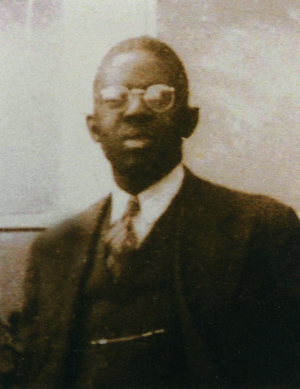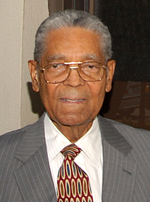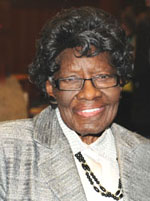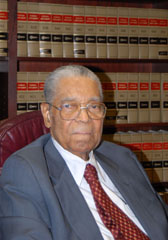

Principal J. Andrew Simmons |
|||||||||||
“Democracy meant addressing our beliefs—not as individuals—
Much attention was directed towards Principal J. A. Simmons (1932-45), a leader among South Carolina’s black secondary educators and president of the Association of Colleges and Secondary Schools for Negroes during the 1937-1938 school year. GEB correspondence notes that Secondary School Study staff had great expectations for Simmons during the project as well as for future years (since the Black High School Study was serving as a method to identify talented school leaders).
A graduate of Fisk University and teacher at Avery Institute in Charleston, James Andrew Simmons, described as the “brilliant and militant head” of Booker T. Washington High School, came to Columbia from Charleston after, at a race relations forum, his comments questioning the segregation of city street cars upset Charleston educators. Simmons resigned and subsequently accepted the principalship at Booker. Yet, stemming from research for his master’s thesis at Teachers College, Simmons would again upset the educational establishment, this time in Columbia, by helping to initiate a lawsuit for the equalization of salaries for white and black teachers (Simmons, 1936; McKaine, 1946, p. 9; Drago, 2006; Hoffman, 1959). Simmons thesis, “Professional and Cultural Background of the Teachers in the South Carolina High Schools for Negroes” underscored the discouraging aspects of the financial security of practicing black teachers in South Carolina and recommended that “the salaries of negro teachers be brought more nearly on a par with that of white teachers” (Simmons, 1936, p. 38).
In 1945, Simmons received a Rosenwald Fellowship to develop an interracial human relations program for high school and adult students, leaving South Carolina and enrolling at Teachers College where he would complete his 1949 dissertation, “Adult Education for Race Relations,” under the guidance of George Counts and John Childs (Simmons, 1949). Simmons continued his career as director of a child welfare agency for black youth outside of New York City. |
|||||||||||
|
|
||||||||||
After Simmons’ departure, John Whiteman would distinguish himself as principal of Booker throughout the remaining years of the Secondary School Study. Fannie Phelps Adams recalled, “Mr. Whiteman was an outstanding principal and a good person who offered so much. Having been a teacher under Mr. Simmons, he continued with that same spirit. We continued to develop the whole child, and the community played a large part in the school. As teachers we visited homes as a way to learn about the children so that we could learn how to work with them. Teachers were out in the community and a part of the community.” |
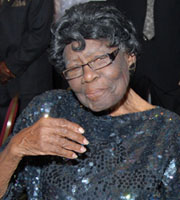 Fannie Phelps Adams |
||||||||||

an institutional member of the International Coalition of Sites of Conscience
Museumofed@gmail.com

